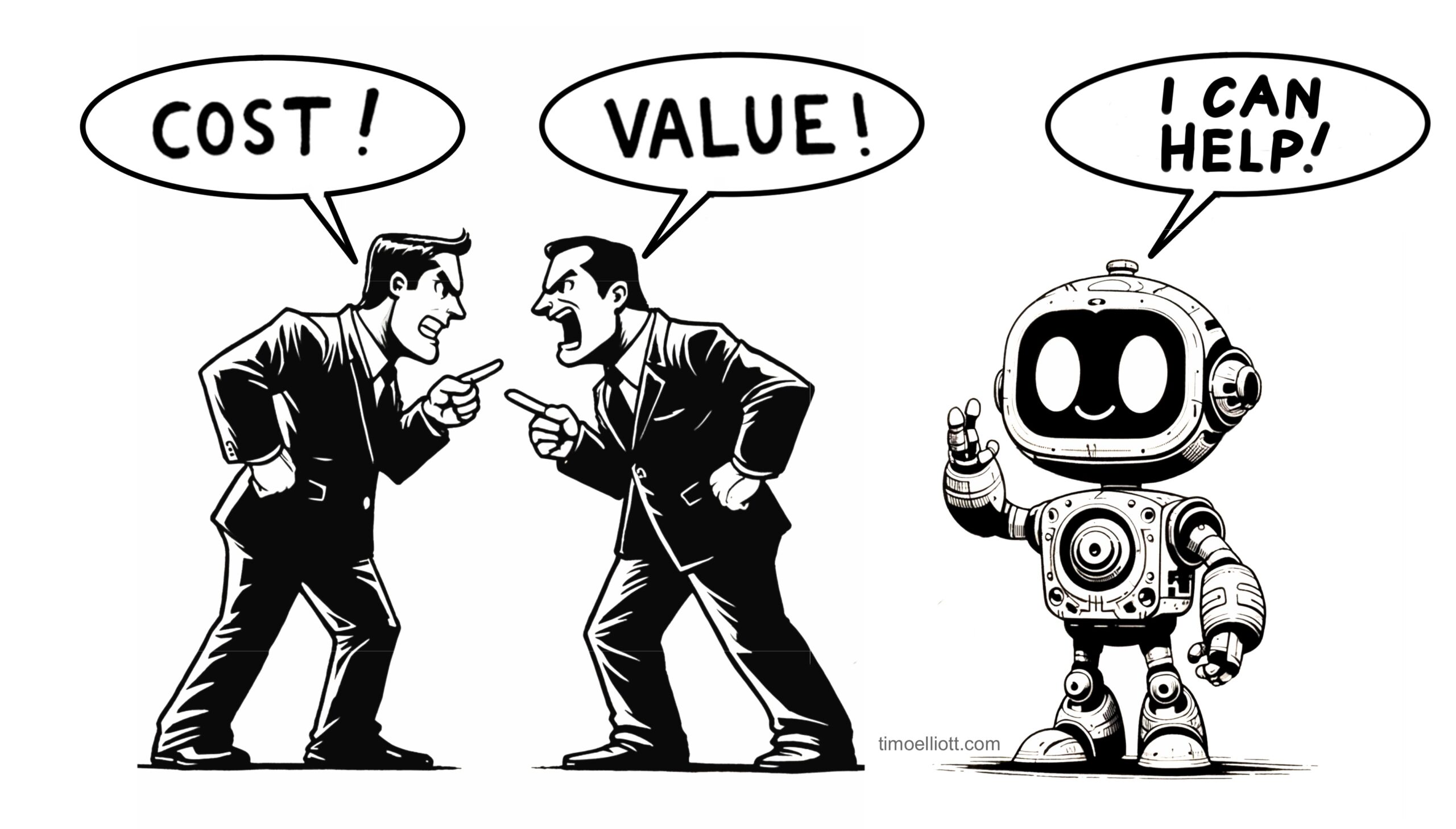I recently got the chance to do an AI overview session for a group of procurement specialists, so here are some thoughts on some of the topics we touched upon.
First, procurement is hard! There are so many tradeoffs—between cost and quality; speed and accuracy, local sourcing and global efficiencies; and between supplier relationships and competitive bidding. The good news is that artificial intelligence can help.
Artificial intelligence for procurement isn’t new. For the last decade, the pattern matching capabilities of machine learning have slowly and steadily been deployed to help organizations automate and optimize purchasing decisions. For example, today’s modern procurement platforms can provide purchasers with smart guidance and predictive search functionality, recommending items based on an optimal combination of past preferences and corporate guidelines. Machine learning can also speed up expense claims by automatically reading key figures from photos or scans of invoices and then checking those claims for compliance and fraud.
The arrival of new generative AI opportunities—the ability to create new instances of something based on existing samples—is now expanding the perimeter of what is possible.

In a play on the AI initials, I’ll explain the benefits in three categories: the new technology allows procurement professionals to Acquire Intelligently, make more Astute Investments, and Accelerate Improvements for the future.
Acquire Intelligently
Generative AI helps you unlock your spend potential. You’re always trying to do more with fewer resources. By taking on mundane and manual tasks, generative AI expands the scope of automation and increases efficiency in new ways—allowing you to focus more on strategic activities.
Generative AI can improve almost any processes involving text creation and analysis, including creating statements of work, analyzing contracts, and creating and translating job descriptions. It can intelligently itemize receipts and help travelers better predict the costs of their future travels.
New chatbot interfaces make procurement systems much more intuitive and easier to use for both purchasers and administrators. In particular, it lowers the barriers to adoption and usage, by helping infrequent users successfully navigate complicated ordering processes.
Astute Investments
Efficiencies aren’t enough. Purchasing organizations understand their role is to maximize value, not just cut costs. Understanding and supporting the real needs of the business requires nuance and expertise. Generative AI can help inform the right tradeoffs in complex discussions with suppliers and internal business stakeholders.
Generative AI can enrich supplier and buyer communications and insights, automate routine processes, and increase market knowledge. It can help spot potential incentive problems, summarize common errors, enrich supplier responses, capture market data, and generate catalog-item descriptions for suppliers.
Accelerate Improvements
Procurement departments have to play a leading role in helping the organizations adapt for the future, not just look to the past. In fast-changing environments, they can help inform the creation of future products and services and boost value to the business.
In particular, emerging business requirements such as sustainability have goals that are difficult to quantify and harder still to achieve. Generative AI can bring actionable recommendations, including the ability to analyze and simulate Scope 3 carbon emissions even before clear data is available, and automate the creation of ESG scorecards for suppliers.
Culture not technology
When it comes to adopting these new AI capabilities in your organization, the biggest barriers aren’t technological.
Did you know that we put a man on the moon before we put wheels on luggage? It seems far-fetched, but it’s true. Buzz Aldrin took his first steps in 1969, yet the first patent for wheeled luggage wasn’t until 1972. And then it took another fifteen years before somebody came up with the idea of a telescopic handle, and a further fifteen years for the invention of modern “spinner” type bags!
Why did it take so long? Clearly, it wasn’t about the technology, it was about culture. In the 1960s, men made up the vast majority of business travelers and it was considered manly to carry your own bags. And if you didn’t want to, there were lots of porters available in every airport and train station. Over the decades, the entire system slowly adapted to the new reality, with more and varied travelers, new luggage shortage machines that didn’t rip the wheels off the new luggage, and smoother airport concourses.
Now is a great time to rethink procurement processes in light of artificial intelligence. Some of your procurement activities are probably obsolete, and should be left to the algorithms. But other areas may be supercharged, allowing you to be ten or a hundred times more effective.
The trick, of course, is figuring out which is which in a technology area that is undergoing a dizzyingly fast rate of change. This first requires learning: the capabilities of new generative AI technologies are often surprising, in both positive and negative ways. The key is to take the plunge and try them out in your daily roles to get a feel for the areas where they can bring the most value.
The next step is collaboration—working with suppliers, business stakeholders, and strategic vendors on the right plans for your AI-empowered procurement future.
